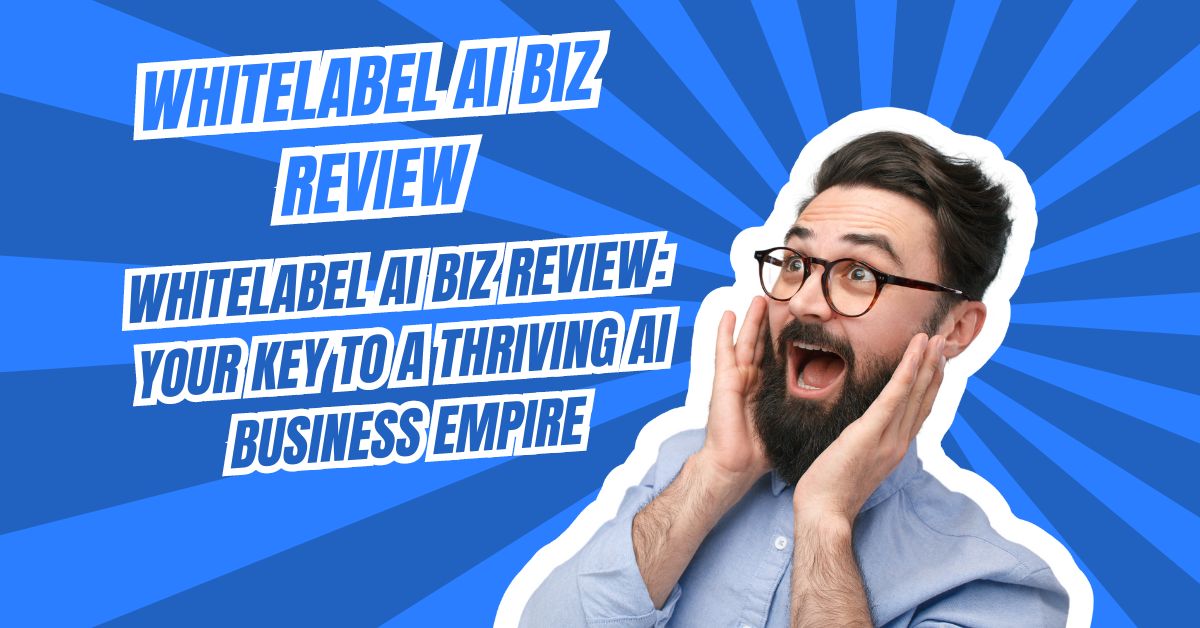
I. Realistic Expectations
- A. Understand the limitations of AI technology Invest $100 Make $1000 a Day
- B. Set achievable goals for AI implementations
- C. Avoid overpromising or overhyping AI capabilities
- D. Focus on practical applications that deliver tangible benefits
- E. Be patient and allow time for AI systems to mature
- F. Continuously evaluate and adjust expectations based on real-world results
A. High return unlikely in a short period
Despite the potential benefits of AI, it is important to have realistic expectations about the timeline for achieving a high return on investment (ROI). AI implementations often require a significant upfront investment in data, infrastructure, and expertise. Additionally, AI systems need time to learn and improve their performance. As a result, it is unlikely that organizations will see a substantial ROI from AI in the short term.
Instead, organizations should focus on building a strong foundation for AI success. This includes investing in the right talent, data, and infrastructure. It also involves setting realistic goals and expectations for AI implementations. By taking a long-term approach, organizations can increase their chances of achieving a high ROI from AI.
B. Focus on long-term growth strategies
Rather than chasing short-term gains, organizations should focus on developing long-term growth strategies for AI. This involves investing in research and development, building a strong team of AI experts, and creating a culture of innovation. By taking a long-term approach, organizations can position themselves to be leaders in the AI revolution and reap the benefits of AI for years to come.
Some specific long-term growth strategies for AI include:
- Investing in AI research and development
- Building a strong team of AI experts
- Creating a culture of innovation
- Partnering with other organizations to develop AI solutions
- Acquiring AI startups
By implementing these strategies, organizations can position themselves to be leaders in the AI revolution and reap the benefits of AI for years to come.
II. Risky vs. Less Risky Approaches
When implementing AI, organizations can choose between two main approaches: risky and less risky. Risky approaches involve investing in new and unproven AI technologies. Less risky approaches involve investing in more mature and established AI technologies. Each approach has its own advantages and disadvantages.
Risky approaches
- Advantages:
- Potential for high return on investment (ROI)
- Can give organizations a competitive advantage
- Disadvantages:
- High risk of failure
- Can be expensive
Less risky approaches
- Advantages:
- Lower risk of failure
- Less expensive
- Disadvantages:
- Lower potential for ROI
- It may not give organizations a competitive advantage
The best approach for an organization will depend on its specific circumstances and risk tolerance. Organizations that are willing to take on more risk may be able to achieve a higher ROI from AI. However, organizations that are more risk-averse may prefer to take a less risky approach.
A. High-Risk, High-Reward (Not Recommended)
This approach involves investing in new and unproven AI technologies with the potential for a high return on investment (ROI).
However, it also comes with a high risk of failure. This approach is not recommended for most organizations, as it can be expensive and risky.
Some examples of high-risk, high-reward AI investments include:
- Investing in a startup that is developing a new AI technology
- Investing in a new AI technology that has not yet been proven to be effective
- Developing a new AI product or service that has not yet been tested in the market
If you are considering a high-risk, high-reward AI investment, it is important to do your research and understand the risks involved. You should also have a clear plan for how you will exit the investment if it does not perform as expected.
1. Day Trading (very risky)
Day trading is a high-risk, high-reward trading strategy that involves buying and selling stocks within the same trading day. Day traders typically use technical analysis to identify short-term trading opportunities. This strategy is very risky and is not recommended for most investors.
Some of the risks associated with day trading include:
- High volatility: The prices of stocks can fluctuate rapidly,which can lead to large losses in a short period of time.
- High transaction costs: Day traders typically make multiple trades per day, which can lead to high transaction costs.
- Emotional trading: Day trading can be a very emotional experience, which can lead to poor trading decisions.
If you are considering day trading, it is important to do your research and understand the risks involved. You should also have a clear trading plan and stick to it.
2. Cryptocurrency (volatile market)
Cryptocurrency is a digital or virtual currency that uses cryptography for security. Cryptocurrencies are decentralized, meaning they are not subject to government or financial institution control. The most well-known cryptocurrency is Bitcoin, but there are many other cryptocurrencies available.
The cryptocurrency market is very volatile, which means that the prices of cryptocurrencies can fluctuate rapidly. This volatility can lead to large losses in a short period of time. Additionally, the cryptocurrency market is unregulated, which means that there is no protection for investors if something goes wrong.
If you are considering investing in cryptocurrency, it is important to do your research and understand the risks involved. You should also be prepared to lose all of your investment.
B. Lower-Risk, Long-Term Strategies
These approaches involve investing in more mature and established AI technologies with a lower risk of failure. They also have a lower potential for ROI, but they are more likely to provide a steady return on investment over time.
Some examples of lower-risk, long-term AI investments include:
- Investing in a large, established AI company
- Investing in an AI index fund
- Using AI to automate tasks in your business
- Developing an AI-powered product or service that has a clear market need
If you are looking for a lower-risk way to invest in AI, consider one of these long-term strategies. These approaches are less likely to result in a high ROI, but they are also less likely to result in a loss.
1. Micro-investing in Stocks or ETFs
Micro-investing is a great way to get started with investing with a small amount of money. With micro-investing, you can invest as little as $1 in stocks or exchange-traded funds (ETFs). This makes it a great option for people who are new to investing or who have a limited budget.
There are a number of different micro-investing platforms available, such as Acorns, Stash, and Robinhood. These platforms make it easy to set up an account and start investing. You can also choose to have your investments automatically deposited into your account on a regular basis.
Micro-investing is a great way to build wealth over time. Even if you can only invest a small amount of money each month, it will add up over time. And, because you are investing in stocks or ETFs, you have the potential to earn a higher return on your investment than you would with a savings account.
2. Real Estate Crowdfunding
Real estate crowdfunding is a way to invest in real estate without having to buy a property yourself. With real estate crowdfunding, you can pool your money with other investors to fund a real estate project. This can be a great way to get started with real estate investing with a small amount of money.
There are a number of different real estate crowdfunding platforms available, such as Fundrise, RealtyMogul, and CrowdStreet. These platforms make it easy to set up an account and start investing. You can also choose to have your investments automatically deposited into your account on a regular basis.
Real estate crowdfunding can be a great way to diversify your investment portfolio and earn passive income. However, it is important to do your research before investing in any real estate crowdfunding platform.
III. Alternative Strategies to Make Money
In addition to traditional investments, there are a number of alternative strategies that you can use to make money. These strategies can be more risky than traditional investments, but they also have the potential to generate higher returns.
Some examples of alternative strategies to make money include:
- Peer-to-peer lending: Peer-to-peer lending is a way to lend money to other people without going through a bank. This can be a great way to earn interest on your money while also helping others.
- Online surveys: You can make money by taking online surveys. This is a great way to earn extra money in your spare time.
- Freelance work: If you have a skill or talent, you can freelance your services to others. This can be a great way to earn extra money or even start your own business.
- Affiliate marketing: Affiliate marketing is a way to earn money by promoting other people’s products or services. This can be a great way to earn passive income.
If you are looking for ways to make extra money, consider exploring some of these alternative strategies. These strategies can be more risky than traditional investments, but they also have the potential to generate higher returns.
A. Develop and Sell a Skill (freelancing, online courses)
If you have a skill or talent, you can use it to make money by freelancing or selling online courses. Freelancing is a great way to earn extra money or even start your own business. You can offer your services on platforms such as Upwork, Fiverr, and Freelancer.com.
If you have a particular skill or expertise, you can also create and sell online courses. This can be a great way to earn passive income. You can sell your courses on platforms such as Udemy, Coursera, and Skillshare.
Here are some tips for developing and selling a skill:
- Choose a skill that you are passionate about and that you are good at.
- Develop your skills through practice and training.
- Create a portfolio of your work to showcase your skills.
- Market your skills to potential clients or customers.
If you are willing to put in the work, developing and selling a skill can be a great way to make money.
B. Sell Unused Items
Everyone has unused items lying around their house. Whether it’s old clothes, electronics, or furniture, there’s probably something you could sell to make some extra money.
There are a number of ways to sell unused items. You can have a garage sale, sell them online, or consign them to a local store. If you’re selling items online, there are a number of different platforms you can use, such as eBay, Craigslist, and Facebook Marketplace.
When selling unused items, it’s important to be honest about the condition of the items and to price them fairly. You should also take good photos of the items and write detailed descriptions.
Selling unused items is a great way to declutter your home and make some extra money. So take a look around your house and see what you can sell!
IV. Importance of Financial Literacy
Financial literacy is the ability to understand and manage your finances. It includes understanding how to budget, save, invest, and borrow money. Financially literate people are more likely to make sound financial decisions and achieve their financial goals.
There are many benefits to being financially literate. Financially literate people are more likely to:
- Have a higher net worth
- Save more money
- Invest wisely
- Avoid debt
- Make better financial decisions
Financial literacy is a lifelong skill that can benefit you in all aspects of your life. It can help you make better decisions about your money, reach your financial goals, and live a more secure financial future.
If you want to improve your financial literacy, there are a number of resources available to you. You can take courses, read books, and find information online. You can also talk to a financial advisor to get personalized advice.
Improving your financial literacy is one of the best things you can do for your financial future. By taking the time to learn about your finances, you can make better decisions about your money and achieve your financial goals.
A. Researching investment options
Before you invest any money, it is important to do your research and understand the different investment options available to you. There are many different types of investments , each with its own risks and rewards. It is important to choose investments that are appropriate for your individual circumstances and financial goals.
When researching investment options, you should consider the following factors:
- Your investment goals: What are you saving for? Retirement? A down payment on a house? Your child’s education?
- Your risk tolerance: How much risk are you comfortable with? Some investments are more risky than others.
- Your time horizon: How long do you plan to invest? Some investments are more suitable for short-term investments, while others are more suitable for long-term investments.
Once you have considered these factors, you can start to research different investment options. There are a number of resources available to help you with your research, including books, articles, and websites. You can also talk to a financial advisor to get personalized advice.
It is important to remember that investing involves risk. All investments have the potential to lose value. However, by doing your research and choosing investments that are appropriate for your individual circumstances, you can minimize your risk and increase your chances of achieving your financial goals.
B. Understanding risk tolerance
Risk tolerance is a measure of how much risk you are comfortable with when investing. It is important to understand your risk tolerance before you start investing, as it will help you choose investments that are appropriate for you.
There are a number of factors that can affect your risk tolerance, including your age, investment goals, and financial situation. Younger investors with a longer time horizon may be more comfortable with taking on more risk, while older investors with a shorter time horizon may be more risk-averse.
There are a number of ways to assess your risk tolerance. You can take a risk tolerance questionnaire, talk to a financial advisor, or simply think about how you would react to different market scenarios.
Once you understand your risk tolerance, you can start to choose investments that are appropriate for you. If you are more risk-averse, you may want to choose investments that have a lower risk of losing value. If you are more risk-tolerant, you may be willing to choose investments that have a higher risk of losing value, but also have the potential to generate higher returns.
It is important to remember that all investments have the potential to lose value. However, by understanding your risk tolerance and choosing investments that are appropriate for you, you can minimize your risk and increase your chances of achieving your financial goals.
Focus on sustainable growth over get-rich-quick schemes
It is important to focus on sustainable growth over get-rich-quick schemes when investing. Get-rich-quick schemes are often too good to be true and can result in you losing your money. Sustainable growth, on the other hand, is a more gradual and reliable way to build wealth over time.
There are a number of ways to achieve sustainable growth. One way is to invest in a diversified portfolio of stocks and bonds. This will help to reduce your risk and increase your chances of achieving long-term growth.
Another way to achieve sustainable growth is to invest in your education and skills. This will help you to increase your earning potential and make better investment decisions.
It is also important to remember that investing is a long-term game. There will be ups and downs along the way, but if you stay focused on your long-term goals, you are more likely to achieve success.
Here are some tips for focusing on sustainable growth over get-rich-quick schemes:
- Set realistic financial goals.
- Invest in a diversified portfolio of stocks and bonds.
- Invest in your education and skills.
- Be patient and stay focused on your long-term goals.
By following these tips, you can increase your chances of achieving sustainable growth and financial success.




